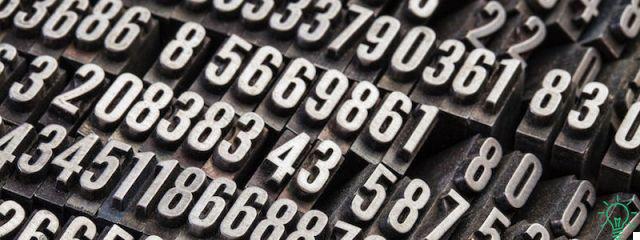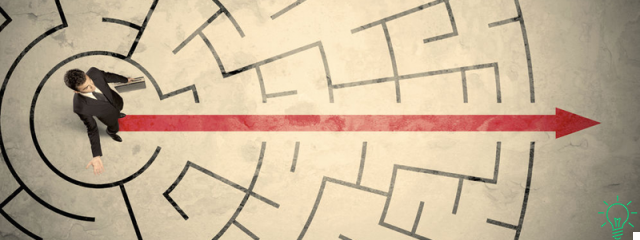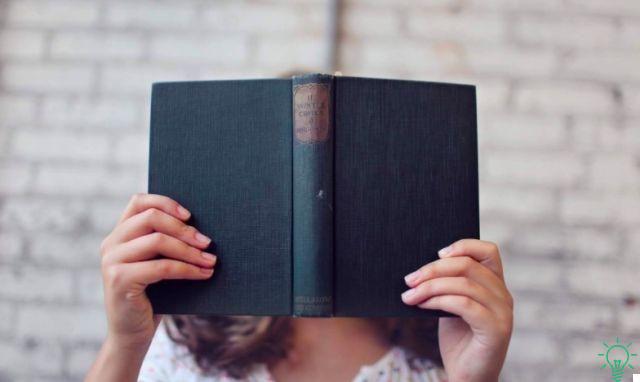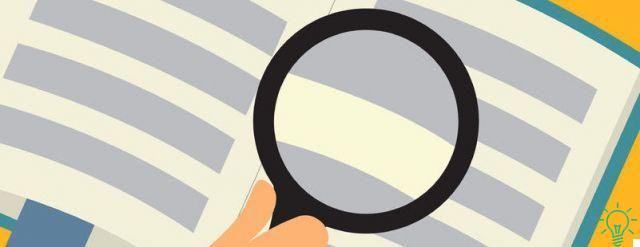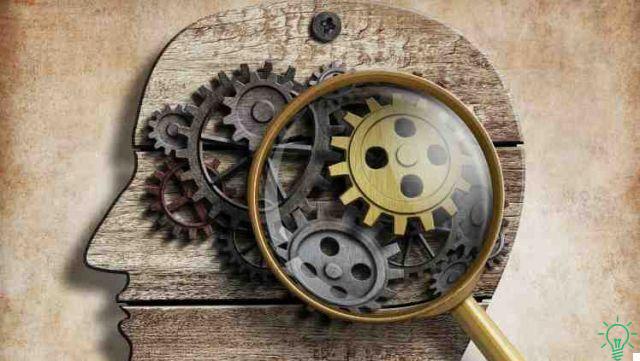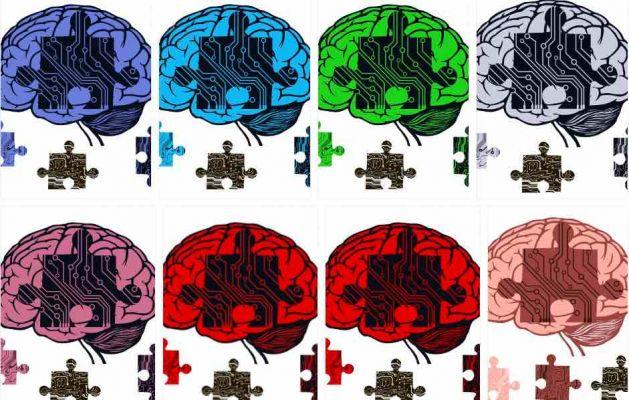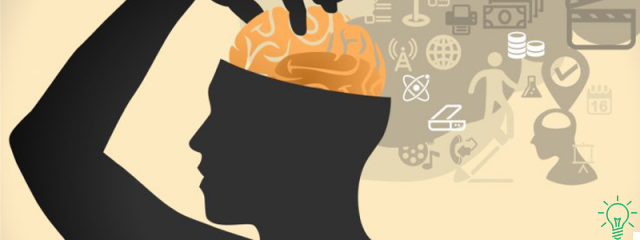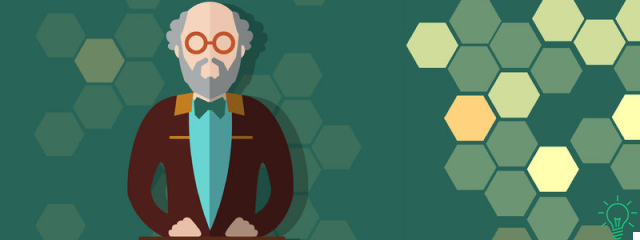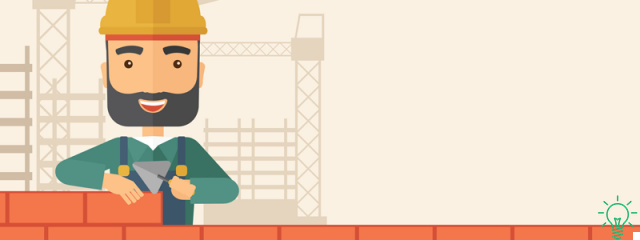
Il palace of the the memorythe mental palace, it is a memorization technique that, despite its 2000 years of history, keeps intact an aura of esotericism and mystery.
In a world where we all happily profess to be chronic forgetful and where "external" memories are widely available, the idea that it is possible remember everything, absolutely everything, captures attention and fascinates.
Also because one iron memory it has obvious practical implications.
When I ask my students what is the biggest difficulty they encounter in studying, I would say that a good 40% of them answer without hesitation "memorize".
To then evoke long, boring and unproductive sessions mechanical repetition of the same concepts.
In this sense, then, the greatness of the mental palace lies not only in the results it can achieve, but also in the way it does it.
For most people, in fact, discovering the palace of memory means discovering a whole new way to use your brain.
A better way.
Go to Amazon to see my manual
History of the memory palace
In high school, I was often late to school.
Normally there were no problems, except on Wednesdays, when we had the teacher in the first hour.
He was already a certain age, he was very well prepared, but above all he was still one of those old-fashioned professors who taught in a suit and tie and demanded strict discipline.
So, almost always when I was late, he saddled me a piece of song from Hell to be learned by heart. Sometimes even a whole song, if it turned badly.
It was to keep up with all that great memorization work that, after I stumbled upon the palace of memory, I decided to deepen it.
The first thing that struck me was the millennial history of this technique.
The list of famous people who used mental palaces is indeed very long!
- Simonides of Ceo, who was the inventor
- Themistocles, who was able to remember all the names and faces of the Athenians
- Cicero, who considered it indispensable for Ars Oratoria,
- Thomas Aquinas, who used it to build his compendiums of theology Giordano Bruno, who transformed it into a magical art
- Matteo Ricci, who, sent to evangelize China, is said to have learned Mandarin in 4 weeks thanks to the construction of an elaborate mental palace to memorize Chinese characters.
- And so on, up to Umberto Eco in the near future
The second thing that struck me was that, despite its illustrious history, I had never heard of the palace of memory before!
As if school teaching had completely forgotten it.
(Years later Hannibal Lecter in "The Silence of the Innocents", Patrick Jane in The Menthalist and Sherlock Holmes in "Elementary" came to make it rediscovered by the general public)
Yet not only the mental palace is a powerful tool for improving your study whatever you care about, but also much more natural than repeating things a hundred times.
In what sense "more natural"?
Let's see it together.
Because the memory palace works
Genetically, modern man is the result of a selection that took place almost entirely in the Pleistocene, an epoch that began 2,8 million years ago and ended about 10 thousand years before Christ.
Our ability to walk on two legs, the ability to oppose thumb and index finger…. but also all our linguistic, logical and mnemonic abilities, are daughters of the evolutionary pressure of the Pleistocene.
Think about it …
For more than 2 million years our species:
- He didn't have to remember phone numbers
- He didn't have to study history, or learn legal codes
- He did not have to remember names or faces or learn foreign languages, living in small tribes that had almost no contact with the outside
So don't be surprised that our memory is not that great when it comes to doing these things.
What our distant ancestors' brains had to remember were things like:
- La road home
- I dettagli that distinguished the hospitable from the inhospitable, the dangerous from the safe, the opportunity from the threat
- Events / situations / objects uncommon
Memorizing was a question that concerned man himself and the space in which he moved, thanks to the interaction and mediation of the 5 senses, in particular that of sight.
Similarly, the memory palace harnesses these natural abilities of our mind by using:
- The enormous potential of visual memory.
- The memory of the things we already know.
- The great impression they make on us strange and different things from the ordinary
How the memory palace works
In a palace of memory the information to remember is transformed into images - possibly strange or extremely detailed - which are then associated with other images of a path of loci (places) that you already know.
This is why it is also referred to as the loci technique.
And for this reason even today, in our speeches, it happens to say
- First
- Secondly
- Thirdly
- And so on ….
They are expressions of Latin derivation due to the fact that the loci were widely used in the art of oratory.
But why this loci strategy makes us remember better?
Before you find out, if you've never done it, let's build your first memory palace.
Stand on the door of your room, start with an object, for example the bed, which will be your first locus, and then counterclockwise locate 11 other objects / loci one after the other.
It is very important that:
- Identify them exactly. In fact, in your room there will certainly be well over ten objects
- The order in which they appear one after the other is clear and leaves no room for confusion.
Now, look at the names and order of the twelve cranial nerves below:
Even reading them several times you will find it hard both to remember them all and, above all, to remember them in order (which is invariably claimed in any neuro-anatomy exam).
It's normal: our short-term memory is very limited, both in time and in quantity.
For this we can remember few things and for a short time, at least until we have passed them in the long-term memory.
Especially for certain types of information this step normally requires a lot of repetition.
With the memory palace technique, on the other hand, for each piece of information you create a short-term image that binds to the long-term image, and in this way you immediately make it easier to remember.
A small example of how the mental palace works
A little while ago you built a (micro) memory palace of twelve loci inside your room to remember each cranial nerve.
Let's say that the first of these loci both the bed.
It is an image that you know very well and that is sculpted granite in your memory.
Suddenly, on the bed, a huge nose appears….
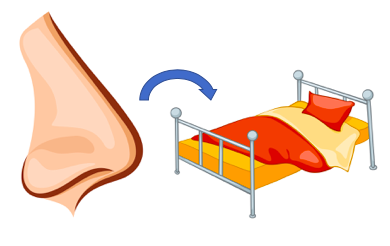
It is not difficult at that point to remember that at the first locus, the bed, is the first cranial nerve, represented by a large nose.
And, from this, go back to the name: olfactory nerve.
Let's put then that the second Locus is the bedside table at the side of the bed.
You open a drawer and you find a little man in a white coat trying to sell you some glasses -> Here is the image that reminds you of the optic nerve ...
Note: if you know someone who is an optician, use it! The closer the image is to something concrete you know, the better. The optician in your drawer thus combines two benefits that make it memorable: it is concrete - because you know it - and it is absurd - because it is in your drawer!
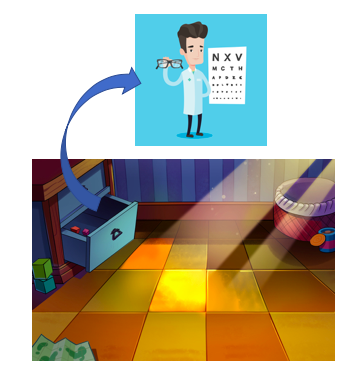
And so on, locus after locus, nerve after nerve.
An example of a palace of memory for jurisprudence
Many law students ask me for info on chow to use the mental palace to study the codes.
Let's see it with a simple example.
Let's say you have to remember the articles of the constitution, and we choose a few at random. .
For an article like number 6:
"The Republic protects linguistic minorities with specific rules"
You could imagine a very small tongue in the sixth locus of your building, for example the window of your room.
For article 10, which talks about the right to asylum and treatment for foreigners, you could just link the image of an asylum to the tenth locus of your building, for example the lamp on your desk.
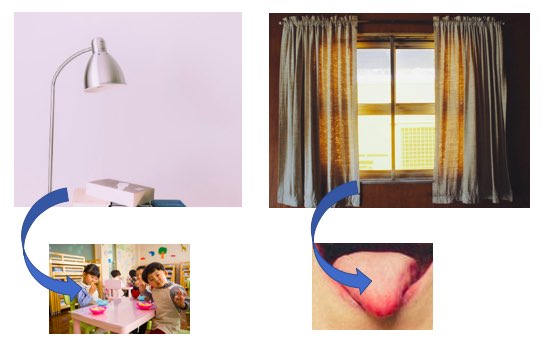
And so on.
Having overcome the difficulty of finding suitable images, memorizing the main subject of each of the 139 articles of our constitution becomes a matter of hours.
Of course, you won't know the article verbatim; but you will have already taken a huge step forward, saving you hours and hours of study.
For the codes the matter does not change in substance. However, in addition to the palace, you can use the phonetic conversion technique, especially when the article numbers multiply.
Thanks to it, instead of loci, you will use the images / number that identify the article (I know, it seems complicated to say, but after finishing this post go read the phonetic conversion technique and you will see how simple it is).
What results can you achieve with a good mental palace
To give you an example of something small that we have just seen, a trained mnemonist can learn names and order of the 12 cranial nerves above even in less than a minute and remember them perfectly even after a week.
When a normal medical student takes at least 5 times as long and after a week he has surely forgotten a piece.
The remarkable thing then is that since the various information are not linked to each other but are each linked to a locus:
- It is really easy to repeat them both in one sense and in the other. And then, for example, starting from the first cranial nerve and reciting the other 11 in ascending order. Or starting from the last and reciting the other 11 in descending order. Like Pico della Mirandola with the Divine Comedy.
- If by chance you forget one piece of information, it has no influence on the others. That is, if for example you don't remember the fourth nerve, you can still remember the fifth, sixth and so on. On the other hand, when we learn “in nursery rhyme”, if we get stuck in one place, we don't remember everything else.
- Any position can be remembered on command. If, for example, they ask you "what is the seventh cranial nerve", you go with your mind to the seventh locus, you see the associated image, and here you are able to answer easily.
Of course, if you have done a lot of practice (and at the end of the article I will explain how to start practicing), you can study not just a few lists and notions, but entire books.
The key to obtaining a performance of this type lies in the two words "a lot of exercise".
If you try to use the palace and haven't practiced, you will happen to say this:
"The palace of memory doesn't work with me,
all those images confuse me and are useless "
Now that you've read how the memory palace works, you may think you can easily memorize not only the cranial nerves mentioned above, but also a long poem, or 300 pages of your next exam.
If you try to do this, however, you are likely to waste a lot of time and mess up a lot, eventually convincing yourself that the memory palace isn't working for you.
In doing so, however, you behave like someone who, after reading how to do the forehand and backhand, goes to play tennis and is disappointed because he doesn't miss a ball.
Absurd not?
But actually it's not your fault.
You see, there is a great misunderstanding about the palace of memory, mainly due to those who sell short courses in which he teaches it by weight.
Or rather, he says he teaches it and then he just gives you quite trivial usage examples, on very easy info and very generic concepts.
The misconception is that the memory palace is easy to use, when it isn't at all.
To use it, especially for demanding subjects, instead it takes great mastery, which takes time and practice to acquire.
In fact, you need to learn how to solve three non-trivial problems:
- How to build a building of adequate size
- How to transform information into effective images
- Which information to transform into images and which not
Not knowing how to properly solve these three problems conditions the use you can make of the building.
This does not make it useless: you can also use it more immediately, although obviously with limitations.
But only those who learn to solve the three problems above can really use it to memorize everything.
The dimensions of the memory palace
Everyone - myself just a few lines ago - in speaking of the mental palace we give examples like the one in your room with the bed, the nightstand, the lamp, the radiator, and so on.
Now, that's fine to explain the basics.
But it is clear that, with your room, you do not get a degree.
Indeed, you do not miss an exam and probably not even a chapter of a book.
The first difficulty that everyone encounters in using the memory palace is that of how to build big enough ones.
To do this you have to become very good at one a technique called "segmentation" and which consists of breaking everything you can into smaller elements.
For example, the bed we talked about above could be divided into a headboard, pillow, doll, sheet, feet.
And so, from a single locus, you got another 5, which we can call SUB-LOCI, or SL.
And then from these 5, by associating 5 random images to each, you can get another 25.
And maybe, by segmenting each one further, you can add another 125 loci to your structure… all dependent on the first locus, your bed.
In this way, for a sentence like the one that follows, only one locus may be enough for you, or even less.
"That branch of Lake Como that turns south, between two uninterrupted chains of mountains, all in breasts and gulfs, according to the protrusion and return of those, comes, all of a sudden, to shrink and take the course and shape of river, between a promontory on the right and a broad coastline on the left!
Does it sound to you?
It is the beginning of the first chapter of the Promessi Sposi and it is all memorized on the mental image of the lock on the door of my house, thanks to the segmentation technique.
If I had used "whole" loci to memorize it, I would have run out of half a house.
Instead, segmenting, I needed much less space.
And this, in addition to being an example for this first problem, introduces us to the next one I want to tell you about ...
Transform information into images
“Branch, Lake, South, Chains, Mountains”.
Try to create, for each of these words, a mental image.
Then, on a little path of Loci you already know, go and insert each of those images.
Once you've done that, it shouldn't be difficult to remember the opening words of chapter I of the Promessi Sposi more or less without errors.
Maybe not on the first rep, but very quickly anyway. In fact, each image acts as a clue to a piece of text.
But if you want to learn the whole chapter things get problematic because you will have to produce a truly monstrous amount of images and therefore of loci and subloci.
Unless you learn to condense so much information into a single image that you will put on a single locus or sublocus.
So yes, things work!
For example, if you are able to see in your mind a branch in the middle of the lake pointed towards the sun and held in the mouth by the former president Monti in chains, here with a single image it is easy for you to start reciting "That branch of etc etc ".
Doing it again is not easy and requires a lot of exercise, but the result can be remarkable.
With an advantage: the images of a branch, a lake, chains, taken individually they are not particularly memorable.
They are mundane objects, and to be remembered you have to make them very realistic and detailed in your mind.
instead an absurd, stupid and complex image like "Mountains in chains in the lake that holds a branch in its mouth pointing towards the sun" has the characteristic, once you have thought of it well, to be truly memorable.
Like a tin cart on a caveman's road.
Of course, if it's just a matter of learning a few lines and only for a short time, using the palace of memory may not help; you probably repeat it a few times first.
But when the line becomes a full page or even a chapter, only a good memory palace can allow you to memorize in a reasonable time.
The information to put in your mental palace
This problem is the most interesting of all because in reality it does not concern only the memory palace, but memorization and learning in general.
Deciding what to image and what not is in fact a simple variant of the problem of deciding what you want to store intentionally and what you don't.
Let's see a short text together:
“The trachea is an unequal, median organ extending from C6 to its bifurcation at the level of T4 / T5. It is an organ that has a sinuous course as it moves to the right due to the passage of the aorta.
At the level of the cervical region it has a distance from the skin of 18 mm, in the thoracic region of 45 mm, at the point of the bifurcation 7cm. "
The typical anatomy text to remember, and not even the most complex.
For which of the many information it contains would you build a mental image?
It's not easy to decide, why every locus you occupy and every image you create have a cost in terms of time and energy you use.
The same thing, on the other hand, happens with the phrase of the betrothed that we have just seen.

Of 17 words, in the end only 5 - the ones in red - are intentionally memorized in the mnemonic image that will go into the building ...
Will they be enough to remember the other 12 with precision?
This type of decision is fundamental, and ultimately it is very similar to the question we should always ask ourselves when we learn.
Up to what level of detail do I have to go?
From experience I know that everyone, absolutely everyone, tries to transform too much information into images when they start using the memory building.
This happens because:
- We are both insecure about ourselves and perfectionists. (This fact alone can destroy learning. I talk about it in this article)
- Our Customers lack of confidence in our normal memory
- We do not want make the effort to understand what the key concepts and information are.
So when you start using the mental palace, the first thing you have to force yourself to do is use it as little as possible.
Better store some less info and then eventually expand your building in a second memorization tour than not exhausting yourself from remembering stuff you don't need or that you would remember anyway, even without a building.
In this regard, among other things, it is by no means certain that it will always serve you….
When NOT to use the memory palace
Students often write to me submitting me long memorizations which they performed using the palace of memory.
Most of the time I point out that, to make them, it wasn't necessary to build it at all! They therefore wasted time and energy.
I'll explain why.
The palace of memory has always been used above all to learn speeches, because in a speech you not only have to know what you will say, but you have to know it in order.
But if the things you have to learn you don't have to know them in order, but just know and that's it, why bother building a palace of memory?
Let's go back to the phrase about the trachea again:
“The trachea is an unequal, median organ extending from C6 to its bifurcation at the level of T4 / T5. It is an organ that has a sinuous course as it moves to the right due to the passage of the aorta.
At the level of the cervical region it has a distance from the skin of 18 mm, in the thoracic region of 45 mm, at the point of the bifurcation 7cm ".
The girl who sent it to me had built an entire memory palace just to remember the trachea and had arranged the various information on different loci of the palace.
To know, therefore, for example, that at the level of the cervical region the skin / trachea distance is 18 mm, he had to travel part of the building to find the information associated with a locus.
From my point of view, a huge waste of time: both because you have to build the building and because you have to walk through it to find the information.
It is obvious that if you have to memorize the betrothed or anything else where order matters (for example, the cranial nerves, of which both name and number must be known) you need the palace.
But if not you can, and indeed, it is more effective to use the information you have to remember as a mnemonic anchor.
It will itself be a mental micro-palace to which to associate any further relevant information.
Micro-palaces of memory and their use
For example, in the text above, the information to remember is "the position of the trachea relative to the spine and the surface of the body".
Then simply create a picture of the spine and trachea together! And use that as basis to associate information.
It is for this reason that I call this type of images "BASIC IMAGES":
For example, since the windpipe is described as "sinuous", imagine a snake tucked right in front of your back (representing the question "position of the windpipe relative to the spine and skin").
It will be the BASIC IMAGE and will represent for you the essence of the information you need to remember, which is the position of the trachea with respect to the spine and skin.
Then segment it, for example into 5 loci:
- eyes
- teeth
- language
- skin
- queue
And associate each of these segments with the various sub-information you want to remember (There are several numbers in that sentence, so to do that you will also need to know the phonetic conversion technique).
At that point, to remember the information you need, you no longer have to go looking for it on your bed, on the radiator, on the neighbor's balcony or on any other element of the path you have built for yourself.
Instead, it will be self-contained within the base image which represents the question they answer.
Let's take an example with another type of subject, imagining that you have to study Karl Marx, starting with the biography:
"Marx was born on May 5, 1818 in Trier, then a Prussian province of the Grand Duchy of the Lower Rhine and today part of Rhineland-Palatinate, to a wealthy Ashkenazi Jewish family, the third son of nine children of the wealthy German lawyer Herschel Meier Halevi Marx (1777-1838 ) and Henriette Pressburg (1788-1863), a Dutch woman from Nijmegen "
Again, a lot of information in a few lines.
If you want to study Marx with the palace of memory, you must have built a big one before you even start!
And then slowly you have to go and fill it.
But what's the point?
It is much easier to do the following:
- Establish clearly what the paragraph is about, what is its main theme. For example. in this case, it could be "The Origins of Karl Marx".
- Find an image that represents this main theme well. For example, a cradle with Marx's face in it. This will be the BASE IMAGE.
- Segment the image in places cradle and associate one or more information to each locus.
- Eventually continue with sub-loci or other free associations if the info is really a lot (a free association does not exploit the mechanism of the loci, but it is simply an image / info that attaches itself to another image / info on which it depends).
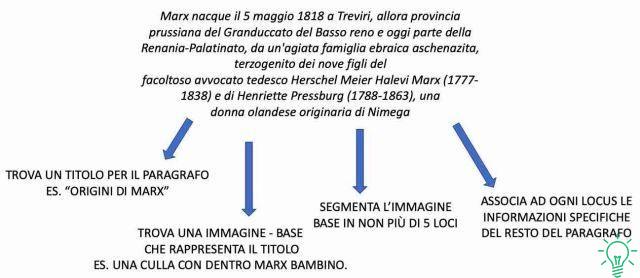
In part, as you can see, we act as for the palace of memory, creating images that represent data / concepts and identifying loci in which to put them.
The big diversity is that the main image / concept, in this case the cradle, you will not associate it with any locus of an already known memory building. But it will itself be an independent micro-building on which to associate other images.
This will cause you to lose some of the short-term / long-term pairing advantage, but will gain you a lot of time, energy and clarity.
Besides the fact that, that first step where you decide the "main theme" is very useful both for the understanding of the text and for the traditional memorization.
Choose a good base image and a good title that represents it it will be an effort of logic and synthesis really useful for learning.
Start using the Memory Building
Students and non-students often ask me questions about their specific needs:
- Anthony, does the memory palace work by anatomy?
- Can I use the mental palace for jurisprudence?
- After so many years I would like to go back to books, can the palace of memory be of any use to me?
- Can I use the memory palace to learn English?
The answer, as you can imagine, is and I….
The first big BUT is that, in fact, a palace of memory is not always needed.
Instead, as we have seen, you can use the same information that you have to remember as Basic Images on which to build a micro-building.
The second big BUT is that to have great results you need lots of exercise
Many make the mistake of suddenly trying to study an entire book with the memory palace.
An error which, as we have seen, is double:
- You don't need to have everything in one building
- It is very tiring and difficult to build large buildings
Mnemonics, like any other technique, must instead be learned in a logical and progressive way.
Here is a simple scheme for practicing the memory palace progressively
1 - Start with simple, mundane word lists.
Build 2-3 small buildings of 20-25 loci and use them to remember lists of 20-25 words like banana / dog / house / sweater and so on.
This will teach you to create detailed and memorable images, to learn not to confuse the order of loci, to build strong mental associations
2 - Move on to slightly more challenging words / concepts / info.
Better still if you take them from your actual study material. The twelve cranial nerves we have seen are a good example of what I mean.
In this way you begin to understand what are the specific difficulties of applying the palace. AND
maybe you discover that you have to remember many numbers and therefore you have to learn the phonetic conversion technique.
Or that you often have to deal with very complex nomenclatures and then have to become adept at transforming into images words like cephalosporins, chorionic gonadotropin, usucapion, and so on.
3 - Learn games like card games, which are excellent agility exercises.
Here the images to remember and build are easy, but the speed with which you execute the memorization increase your confidence in associating images.
4 - Practice with fragments of poems or longer and longer texts.
It is an exercise that has different difficulties and needs.
The poems must in fact be remembered word for word. However, you must try to do as in the example of the betrothed, where with 1/3 or 1/4 of the words you remember all the others.
For non-poetic texts you have to focus on the relevant concepts and data instead.
Eventually you will come to be able to really study an entire long text relying mostly on the memory palace (and micro-palaces!). It will be tiring but also extremely faster than normal memorization.
And that's really all
PS Do you want to deepen the memory and study techniques that complement the memory building?
Read:
Quick reading: why and how it works
Eidetic or photographic memory: what is it?
How to memorize foreign words with the Keyword Method
Knowing how to learn: the (almost) definitive guide of the GetPersonalGrowth blog





